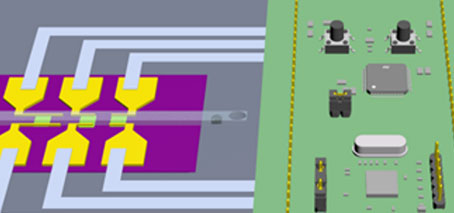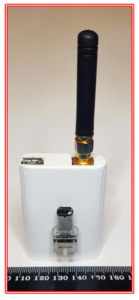A Meet FLEET innovation-and-industry event poster
The Challenge
Capability for fast, automated, stand-off detection of toxic gases at the parts per million (ppm) level is required for environmental monitoring, early detection of bush fires, toxic emissions from metal processing or mining.
This capability can be used for monitoring the spread of toxic gases and aid in the decision-making capabilities in case of humanitarian disasters.
The Solution
Field effect transistors (FETs) integrated with a micro-electronics bias and monitoring circuitry, wireless communications capability and an air-sampling system can be operated remotely as electronic sensors of toxic gases.
The active element used in the FET generates a measurable electronic response to extremely low concentration of gas molecules (analytes) in air.
Key Benefits
- Light weight
- Automated: Can be used for remote sensing with the help of drones
- Cheap and scalable production
- Fast response
Development Stage
- Proof of concept demonstrated. Seeking strategic partners.
- We are looking at a Linkage grant to take our devices from TRL 3/4 to TRL 7/8
Brief Description & Differentiation
We use a scalable approach to fabricate electronic sensors with a material capable of detecting gas molecules at a parts per million concentration. Our sensors are electronic sensors that integrate sample collection and analysis. There is no requirement for off-site analysis. Our sensors are small and light weight. There are no moving parts in our sensor that require alignment which means the sensors can be transported to remote locations with the help of drones. The analysis results can be wirelessly transmitted to a centralised hub.
- Scalable manufacturing
- Electronic read-out
- Automated operation
- Wireless communication capability
- Fast response – few mins
- Low limit of detection – ppm
- Light weight, cheap
Intellectual Property
- CT/AU2023/050475
Key Publications
- T.P. Nguyen, et. al., (in preparation)
More information
- Contact A/Prof Sudha Mokkapati sudha.mokkapati@monash.edu




